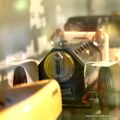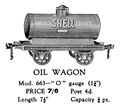Category:Toyshop Steam (display)
| Display Area |
|---|
 |
| 03 - Toyshop Steam (display) Arch Two |
| –– 01 02 03 04 05 06 07 08 09
10 11 12 13 14 15 16 17 18 19 20 21 22 23 24 25 26 27 28 29 30 31 32 33 34 35 36 37 38 39 40 41 42 43 44 45 46 47 48 49 50 51 52 53 54 55 –– 57 58 –– –– 61 62 63 64 65 66 67 –– –– –– 71 72 73 74 –– 76 77 78 79 80 81 82 83 84 85 86 –– –– –– |
A cabinet of commercially-sold steam-powered toys and models, with some supporting promotional material.
The cabinet is just inside the entrance to Arch Two, on the right, facing the Kamov Ka-25 helicopter.
History
Before the advent of small, powerful electric motors and standardised high-powered batteries, mechanical toys usually had to be powered either by clockwork or by steam, and of the two, steam power had the advantage of usually lasting a lot longer than a clockwork motor. Desktop engines for powering models of factory machines or home-made gadgets were much more satisfying in steam than clockwork, and the owner could set them running and stand back and admire the result without having to continually wind the thing up again, and manufacturers of steam-powered boats (such as Bowman ) advertised them as superior to clockwork in terms of power and range.
Nineteenth Century
Model railway engines were one of the most obvious candidates for steam powered toys, and some of the first Nineteenth Century toy railway locomotives (referred to as "floor locos", because they didn't yet use track) were steam-powered "dribblers" that tended to leave a trail of oil and water behind them.
Early Twentieth Century
The trackless "dribblers" didn't really survive into the C20th, partly because of the obvious safety issues of having in small vehicles with onboard liquid fuel running free and uncontrolled where they could fall over and start fires. With the new "tracked" model locomotives that started to appear in the 1890s, electricity started to be a feasable option, as mains power of bulky battery power could be supplied to a model locomotive via the metal track. Steam-powered model locos persisted for decades more (partly because owners often liked the authenticity of real steam), but as the size of model railways shrank first to gauge 0, and then to 00/H0 gauge, steam power became a less practical option.
Post-War
By the end of World War Two the market for steam-powered toys had contracted to the point that steam was mainly being used for model traction engines and other models aimed at steam enthusiasts. By this time, Bing and Carette (who'd been major suppliers of steam-powered models and desktop engines) no longer existed, and the UK market for live steam mostly consisted of Mamod's range, and specialist engines such as those made by Stuart Turner's company aimed at the model engineering and model boatmaking communities (see: Custom Steam (display) ).
Pages in category ‘Toyshop Steam (display)’
The following 22 pages are in this category, out of 22 total.
B
S
- SEL 1540 steam engine
- Shell Motor Spirit tanker (Bowman Models 663)
- Single oscillating vertical steam engine (Bing)
- Snipe steam-powered model speedboat (Hobbies-Bowman)
- Steam powered 4-4-0 model locomotive (Bowman Models 234)
- Steam Roadster (Mamod SA1)
- Steam Workshop (Plank)
- Stephenson's Rocket carriage, TREASURER (Hornby G104)
- Stephenson's Rocket, steam-powered (Hornby G100)
Media in category ‘Toyshop Steam (display)’
The following 16 files are in this category, out of 16 total.
- Area 03.jpg 800 × 798; 344 KB
- Boulton and Watt centre pillar beam pumping engine, detail.jpg 1,500 × 1,000; 985 KB
- Bowman carriage 17172 detail.jpg 1,600 × 1,200; 1.05 MB
- Bowman Loco 234.jpg 1,086 × 672; 103 KB
- Burrell traction engine model, GK1962, Bassett-Lowke, side view.jpg 2,200 × 1,425; 1.11 MB
- Burrell-type Traction Engine (BLCat 1962).jpg 1,348 × 2,000; 370 KB
- Hornby Rocket Brochure LowQualityPhotocopy.jpg 1,219 × 1,729; 353 KB
- Mamod car detail.jpg 1,600 × 1,200; 1.22 MB
- Oil Can (Dunhills Motorities).jpg 1,024 × 726; 207 KB
- Shell Motor Spirit Oil Wagon, Bowman Models 663 (BowmanCat ~1931).jpg 1,346 × 1,205; 441 KB
- Snipe speedboat, Bowman (MM 1931-05).jpg 2,340 × 1,557; 621 KB
- Steam Workshop (Ernst Plank).jpg 1,600 × 1,200; 1.13 MB
- Stephensons Rocket (Hornby G100).jpg 1,600 × 901; 616 KB
- Stephensons Rocket, closeup (Hornby G100).jpg 1,600 × 1,067; 701 KB
- Stephensons Rocket, Treasurer carriage (Hornby G100).jpg 2,200 × 1,467; 1.32 MB
- Twin Cylinder Overtype Steam Engine (Doll et Cie).jpg 756 × 800; 347 KB



















